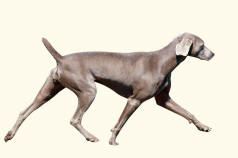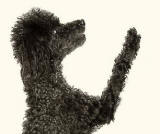Glossary

Gait
The pattern of movement of animals during (terrestrial) locomotion.
Gaits used by cats and dogs include the walk, the amble, the pace, the trot, the canter and the gallop.
Gaits used by cats and dogs include the walk, the amble, the pace, the trot, the canter and the gallop.
Limbs
An appendage to the main body of an organism.
For example, an arm, leg, flipper or wing.
For example, an arm, leg, flipper or wing.
Forelimb
Either of the cranial (anterior) limbs.
Hind Limb
Either of the caudal (posterior) limbs.
Contralateral
Relating to the opposite side of the body.
For example, diagonally contralateral limbs are limbs on diagonally opposite sides of the body.
For example, diagonally contralateral limbs are limbs on diagonally opposite sides of the body.
Ipsilateral
Relating to the same side of the body.
For example, ipsilateral limbs are limbs that are on the same side of the body.

For example, ipsilateral limbs are limbs that are on the same side of the body.

Forequarters
The front region of an animal, excluding the head and neck.
One function of the forequarters is to absorb the weight (shock) during locomotion. At rest approximately 60% of the weight of a dog is borne by the forequarters.
One function of the forequarters is to absorb the weight (shock) during locomotion. At rest approximately 60% of the weight of a dog is borne by the forequarters.
Hindquarters
The hind region of the dog, from the loin.
Hindquarters should be in balance with forequarters to achieve a relaxed, efficient, graceful and fault-free gait.

Hindquarters should be in balance with forequarters to achieve a relaxed, efficient, graceful and fault-free gait.

Title9
text
hover over shaded words to reveal more
Angulation
The angles formed by bones meeting at a joint (when an animal is standing at rest).
When the forequarter angulation matches the hindquarter angulation, the animal is said to be in balance.
Good and balanced angulation results in a smooth stride, allowing an animal moving with ease and grace.






